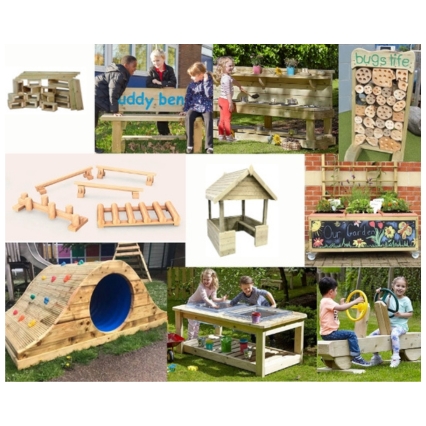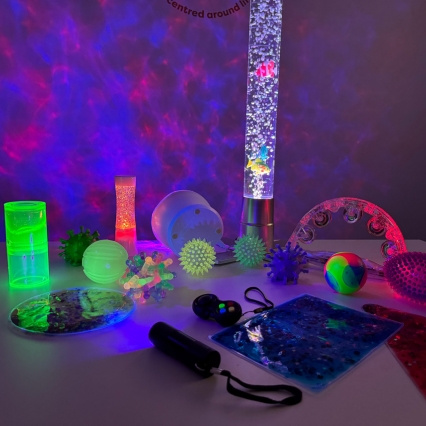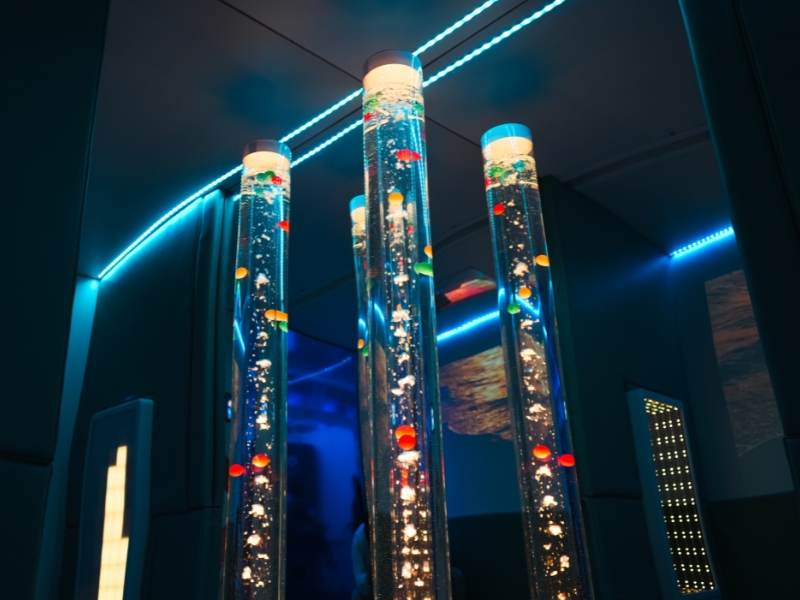We use cookies to make your experience better. Learn more
Key Considerations before installing a Sensory Room

Designing a sensory room is an exciting opportunity to create a space that supports sensory processing, regulation, and engagement. It’s also a detailed process that requires thoughtful planning to ensure the room meets the unique needs of its users and delivers the best possible outcomes. From selecting the right features to understanding the unique needs of the individuals who will use the space, each decision plays a vital role in achieving the desired outcomes.
However, before diving into the design, it’s important to take the time to carefully plan and consider several key factors. By doing so, you’ll ensure the space is tailored to the users’ needs and delivers maximum benefit.
Here are the most important considerations to keep in mind before designing your sensory room:
1. Understand the Needs of Your Users
The first and most critical step is identifying who the sensory room is for and what they need.
- Who Will Use the Room? Are you designing for children, adults, or a mix? Consider their specific sensory processing challenges and developmental needs.
- What Are the Goals? Determine whether the room’s primary purpose is calming, stimulating, skill development, or a combination of these. You may also want to consider a soft play room or Sensory Integration room as well.
- Input from Professionals: Consult with occupational therapists or specialists to ensure the room aligns with best practices for sensory integration.

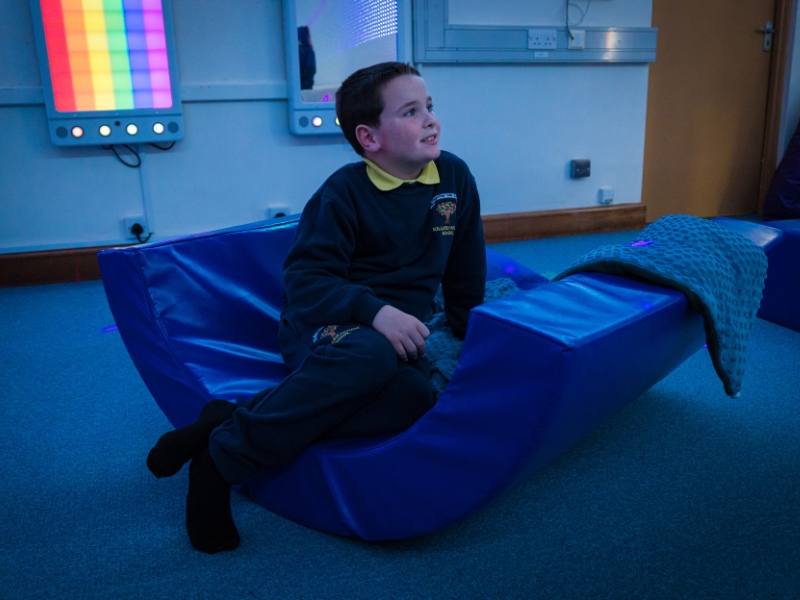
2. Assess the Available Space
The size, layout, and location of your sensory room will influence its design and functionality. Before deciding on the type of sensory space, consider whether a full room, modular solution, portable setup, or even a sensory corner would work best based on the available space:
- Room Size: Even a small area can be transformed into an effective sensory corner or portable solution, while larger spaces can accommodate a full sensory room or multiple zones for specific activities. Modular and portable solutions offer flexibility for varying room sizes, providing a tailored approach without the need for permanent structures.
- Shape and Layout: Consider how the room’s shape will accommodate equipment and user movement. Larger spaces may allow for different zones such as calming areas, active play zones, and interactive spaces. On the other hand, compact spaces like sensory corners can be designed to offer calming or stimulating experiences in a smaller footprint, using adaptable equipment.
- Accessibility: Whether you're designing a full room or a portable solution, ensure that the space is accessible for all users. If the space is shared, a portable setup like our Sensory Hive or Sensory Trolley may provide flexibility and ease of movement. For dedicated rooms, ensure that pathways are wide enough for users with mobility challenges and that equipment placement allows for easy access.
By evaluating the space, you'll be able to choose the right solution—whether it’s a full sensory room, a versatile modular design, a portable solution, or a sensory corner—that best meets your needs.
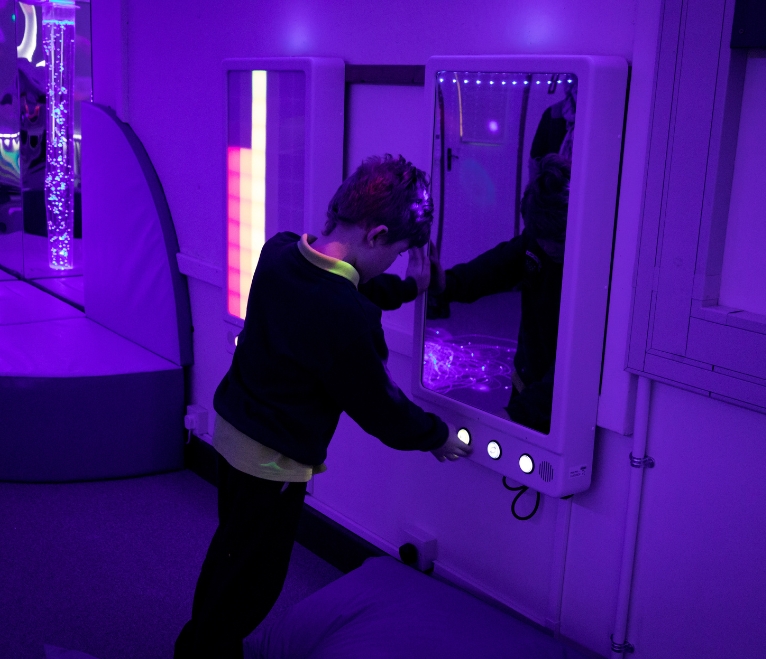

3. Plan for Versatility
A sensory room should be versatile, catering to different needs over time while offering flexibility for its users.
- Multifunctional Equipment: Invest in sensory tools and equipment that serve multiple purposes. Items like interactive panels, bubble tubes, or adjustable lighting can provide both calming and stimulating effects, depending on the user’s needs. This ensures the space can adapt to various sensory preferences and activities.
- Flexible Layout: Design the space with adaptability in mind. Select furniture and equipment that can be easily rearranged or modified to accommodate changing requirements or new features. Modular solutions can make it simple to refresh the room without major renovations.
- User-Centered Design: Think about how users interact with the space daily. Features like adjustable heights for interactive elements or movable sensory tools make the environment accessible and engaging for a variety of users.
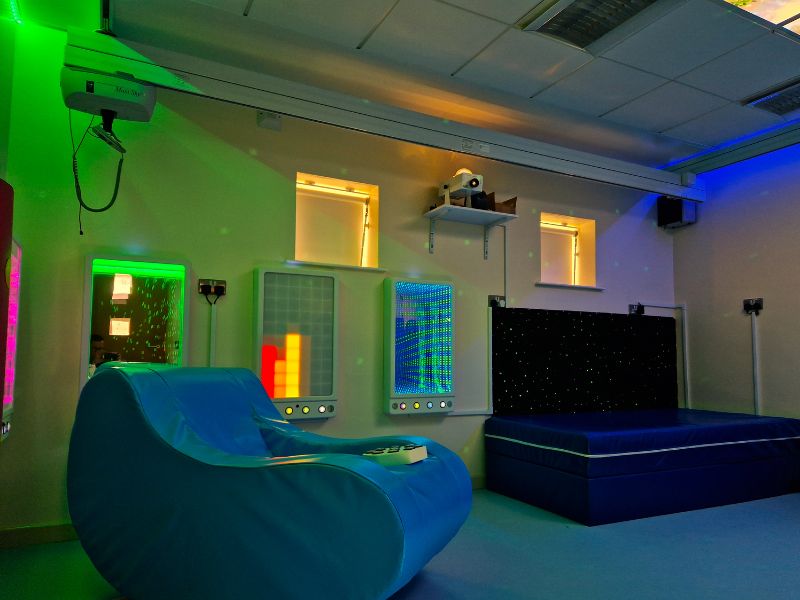
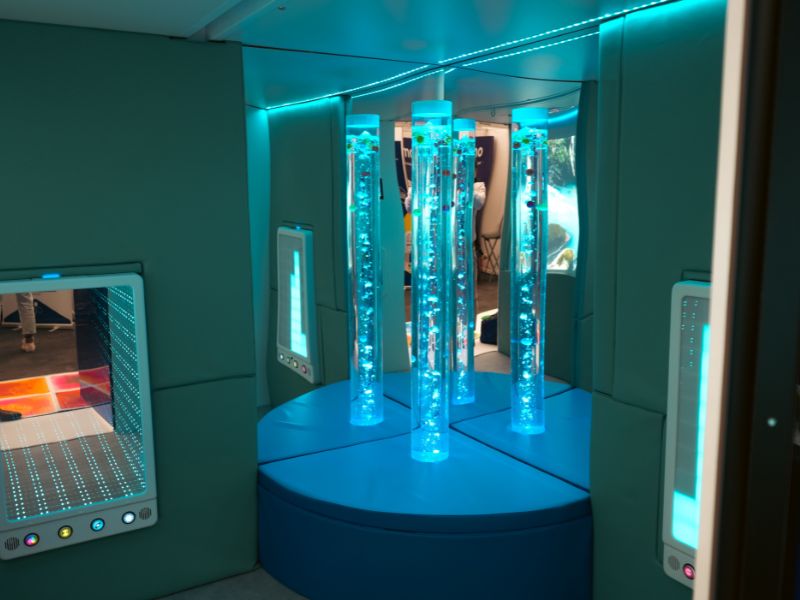
4. Incorporate Safety and Comfort
Safety is paramount in any sensory room, especially for users with heightened sensory needs, mobility challenges, or specific healthcare requirements.
- Padded Walls and Floors: Provide protection during active play and create a soft, comfortable environment that minimizes the risk of injury.
- Secure Fixtures: Ensure all equipment is securely mounted or placed to prevent accidents or misuse, particularly in environments with high activity levels.
- Accessible Design: Include equipment that’s easy to use and navigate for individuals of all abilities, ensuring that the space feels welcoming and functional for everyone.
- Specialised Safety Features: In mental health or healthcare settings, consider additional safety requirements such as anti-ligature designs. This includes secure fixtures, tamper-proof equipment, and designs that minimise risk while maintaining a calming and therapeutic atmosphere.

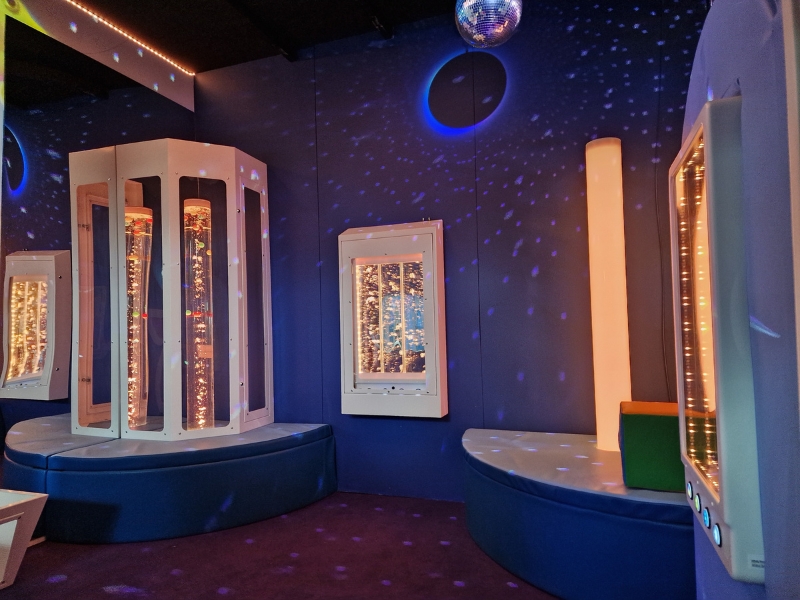
5. Budget and Maintenance
It’s important to establish a clear budget and plan for long-term maintenance.
- Set Priorities: Focus on the most essential elements first, such as calming lights or interactive panels, and gradually add more items based on your budget.
- Quality Equipment: Invest in high-quality, durable equipment that will withstand frequent use, especially in environments like schools or therapy centers.
- Ongoing Care: Consider the long-term care of the space, including how often you’ll need to update or replace equipment.
Let Creative Activity Help You Design Your Sensory Room
At Creative Activity, we specialise in creating customised sensory spaces that meet the unique needs of your users. Whether you’re planning a full sensory room, a modular solution, or a sensory corner, we’ll help you design a space that promotes sensory regulation and engagement.
Book a complimentary room design today!
start planning a sensory room that’s functional, safe, and tailored to your needs.
Let us guide you through the design process and help you create a sensory space that enhances sensory processing and provides lasting benefits.
